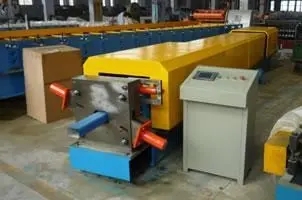
The Evolution of Guardrail Block Spacer Cold Bending Machines
In the realm of highway safety and infrastructure, guardrails play a pivotal role in protecting both vehicles and pedestrians. To ensure their efficiency and durability, the manufacturing process has evolved significantly over the years, particularly with the advent of guardrail block spacer cold bending machines. This cutting-edge technology has revolutionized the way guardrail systems are produced and installed, contributing greatly to road safety.
Understanding the Guardrail System
Guardrails are designed to prevent vehicles from veering off the road, thereby mitigating the impact of collisions. Each guardrail system comprises a series of components, including posts, beams, and block spacers. Block spacers are essential as they support the guardrail, maintaining its structural integrity and alignment. The production of these block spacers requires precision engineering, and this is where cold bending machines come into play.
The Functionality of Cold Bending Machines
Cold bending machines have transformed how block spacers are created. Unlike traditional bending methods that require heating the metal to a malleable state, cold bending techniques utilize hydraulic or mechanical force to shape the material at room temperature. This method leads to several advantages, including improved material properties, reduced energy consumption, and precise dimensions.
The operation of a guardrail block spacer cold bending machine typically involves feeding raw steel into the machine, where it is then shaped into the required profile. The design of these machines is tailored to accommodate various specifications, allowing manufacturers to produce block spacers that meet different regional or national safety standards.
Benefits of Using Cold Bending Technology

1. Enhanced Structural Integrity Cold bending maintains the metal's crystalline structure, enhancing its strength and durability. This improved integrity is crucial for guardrails, which must withstand harsh weather conditions and impact forces.
2. Cost Efficiency With less energy required for production, cold bending machines help reduce operational costs. Lower energy consumption translates into financial savings for manufacturers, allowing them to allocate resources elsewhere.
3. Precision and Consistency The automation and technology behind cold bending machines ensure that each block spacer is produced to exact specifications. This consistency is vital in maintaining the quality and safety of guardrail systems.
4. Adaptability These machines can be adjusted quickly to accommodate different block spacer designs. This flexibility allows manufacturers to respond to varying customer needs and market demands efficiently.
The Future of Guardrail Block Spacer Production
As technology continues to advance, we can expect further innovations in the realm of cold bending machines. The integration of automation and smart technology may lead to even more efficient production lines, reducing waste and increasing output.
Moreover, with global emphasis on sustainability, the future may see a rise in the use of recycled materials for guardrail production. Cold bending machines are well-suited for such adaptations since they can handle various materials without compromising on quality.
In conclusion, guardrail block spacer cold bending machines represent a significant step forward in the production of essential highway safety components. Their ability to produce durable, precise, and cost-effective materials enhances overall road safety, reflecting the importance of continuous innovation in the manufacturing sector. As we look to the future, the ongoing enhancements in this technology will play a critical role in shaping safer roadways and protecting lives.